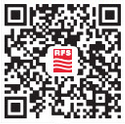Overcoming Wi-Fi 6e interference issues
The problem with interference
Fixed Microwave is an extremely popular choice for backhaul networks. Regardless of market application – Wireless, Utilities, Public Safety or Broadcast it is pervasive with 6 GHz and 11 GHz the two most commonly used frequency bands, particularly in North America. In fact, 6 GHz alone has approximately 100,000 registered links.
However, one of the current challenges faced by microwave users is potential interference caused by Wi-Fi 6e due to rule changes in 6 GHz band. The question for someone like RFS is: can we develop a solution that pre-empts potential problems with interference and offers technology that overcomes such disruption and leaves users with a cost effective, easy to install, and reliable microwave backhaul option?
What is WiFi 6e?
WiFi 6e is the biggest overhaul to WiFi in 20 years and will open up the 6GHz band to ease spectrum congestion for WiFi networks.
The need for expertise
This is where our TowerBooster solution comes into play. We have spoken in previous blogs about the ease of deployment and cost benefits the TowerBooster solution offers to our customers. However, unless we are able to make sure that the solution is capable of dealing with any potential interference issues, then we can't conclude that we are offering a genuinely robust backhaul solution, which following regulatory changes, is what the market absolutely needs.
RFS has an extensive team of microwave experts that have a true understanding how technologies interact and how to get the most out of the frequencies that we design solutions for. This has been of particular value when designing the TowerBooster solution where operators can create a frequency mitigation plan by configuring both 6 GHz and 11 GHz links using a single dual band antenna. In this scenario, microwave users will not only have Wi-Fi 6e mitigation in the network, they will be able to increase capacity by deploying links anywhere from 2+0 to 8+0 while also using highly sought XPIC feature. Finally, all these benefits come without increasing antenna leasing cost.
Conclusion
The needs of our customers using fixed microwave are clear: they need a strong backhaul platform and to increase capacity while reducing TCO. At the same time, users in 6 GHz band are increasingly concerned with potential Wi-Fi 6e interference. The TowerBooster solution allows us to say to our customers “do not panic”. By deploying 6 GHz and 11 GHz links using one single antenna, they are not only able to increase capacity and reduce TCO, but benefit from a solution that prevents rule changes hampering the performance of 6 GHz Fixed Microwave.

.jpg)
